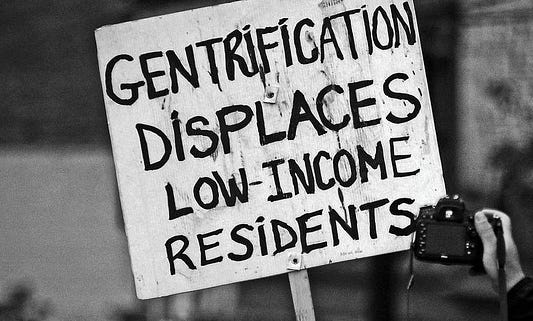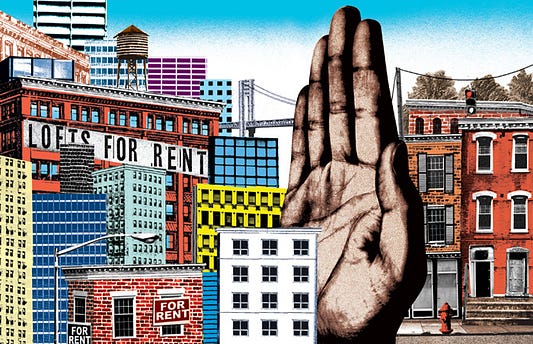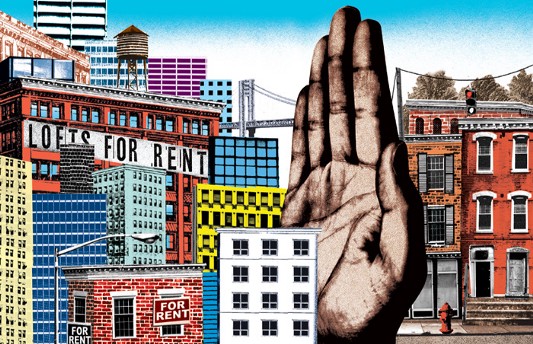By Ishrat Jahan, Student at Urban Assembly Institute of Math and Science
My name is Ishrat Jahan and I am a Junior at Urban Assembly Institute of Math and Science for Young Women in Brooklyn, New York. In our Generation Citizen class, my classmates and I chose gentrification as our focus issue because we believe that there is a gap between tenants and their landlords — driven by large scale displacement — and there is an 18 bill package in the City Package that will prospectively bridge it. I believe that Op-Eds are important because they provide a distinct, impacting platform to cultivate your ideas and voice them with a broad, engaging audience. Therefore, I wrote this piece as a means towards raising awareness about the direct consequences of gentrification and the importance of implementing a solution that can ultimately make significant strides in our very own communities.
New York City is one of the recreational and business hotspots globally. It is home to gorgeous parks, giant skyscrapers, amazing food, and 8 million people. Although these qualities have attracted some hardworking, ambitious, and successful people, it has also attracted high, concentrated levels of gentrification. Gentrification is the process of renovating urban neighborhoods for the purposes of welcoming wealthy, economically advantaged people. Recently, the City Council has proposed a package of bills that would protect those who are facing the unintended effects of gentrification in local communities. If we care about preserving the fabric of New York City neighborhoods and avoiding large scale displacement of local communities, the City Council should adopt these bills and Mayor de Blasio should promptly sign them into law.
Gentrification is a rising issue — in neighborhoods across the city, people are forced to leave their homes, their sacred place because they are unable to pay unbelievable, enormous amounts of rent. Gentrification continues to foster discriminatory behavior and displacement throughout the boroughs. It is disheartening to hear about the many who are left in homeless shelters and indescribable conditions due to this economic influx, demands in housing, and unethical practices by many landlords. Classmates in my civics class have sympathized and spoke about their low-income family, friends, and acquaintances who are bribed, evicted, and ultimately left in shelters across the city that consist of unsanitary and detrimental conditions. Through our work with Generation Citizen, an organization that works to educate young people about how to be civically engaged at the local level, my class identified gentrification as an issue impacting our community, researched its root causes, and diligently worked to make systemic change. We used our passion and skills to terminate widespread gentrification. We asked ourselves, what could we do as a community to help eliminate or even ease the effects of this process holistically that will be bigger than us? It was imperative for us to understand that as our city continues to grow, our communities are in danger of falling apart. We realized that it is our civic duty to engage in the alleviation of gentrification across New York City.
“…as our city continues to grow, our communities are in danger of falling apart…”
Rising rates of gentrification in neighborhoods across the city are causing increased financial strain for many — one of the biggest ways this occurs is through the rise of rent. Tenants who are facing the effects of gentrification are typically low income residents who have moved in when the rent was exceptionally lower. Therefore, it can be extremely difficult for these community members to sustainably afford the jump in rent prices. Despite all of these changes, we learned a few were considered slightly invulnerable to the effects of gentrification: tenants in rent stabilized apartments. Roughly 2.2 million apartments in New York City are rent stabilized. These apartments are designed to have a “fixed” rent payment with little increases. Therefore, although the neighborhoods may be subject to gentrification, the exponential increase in rent is not enforced upon homes that are rent stabilized. However, unfortunately, those living in rent stabilized homes are not immune to the effects of gentrification anymore. Recently, it has gotten to the point in which certain landlords will execute coercive and immoral practices such as harassment, bribery, fraud, and falsification to force rent stabilized tenants to vacate the apartment in an effort to move in high income residents for increased rent.

Fortunately, not one, but 18 ways to address the effects of gentrification and unethical practices in rent stabilized apartments have been introduced in the City Council: an 18 bill package. My classmates and I researched and discussed extensively — believing that this proposed bill covers a vast area of aspects that relate to the cause and effects of gentrification. If we were to solve this issue or even affect its outcome, this bill would be a perfect shot to do so. This package of bills, introduced by City Council Speaker Corey Johnson, focus on cracking down on bad landlords who participate in immoral and unethical acts. This bill includes penalties for landlords who harass tenants, falsify permits regarding building occupation, illegally convert one bedroom apartments to four, and hold back vital information regarding the property from tenants. Moreover, the bills will require new inspections of building sites to ensure tenants are not being harmed by construction, require landlords to report buyout packages, and instruct the city to inform tenants about violation hearings. Essentially, this proposal will help put forth and implement stronger tenant protection laws and regulations in New York City against gentrification, increased rent, and injustices towards tenants in rent stabilized apartments.
“…this proposal will help put forth and implement stronger tenant protection laws and regulations in New York City…”
As gentrification expands, the prevalent cycle of displacement of low-income residents and the dismantling of communities particularly in neighborhoods across the city only worsens. If we want to end this cycle, we need to fulfill our responsibilities as community members and urgently work to resolve these issues before they get further out of control. We need to understand the consequences of widespread gentrification and begin encouraging decision makers to pass these 18 bills. While gentrification is a complex and complicated topic, this bill package is a step towards resolving one of the root causes of gentrification, protecting the fragile communities that make up our city, and promising a better system for everyone in it.

